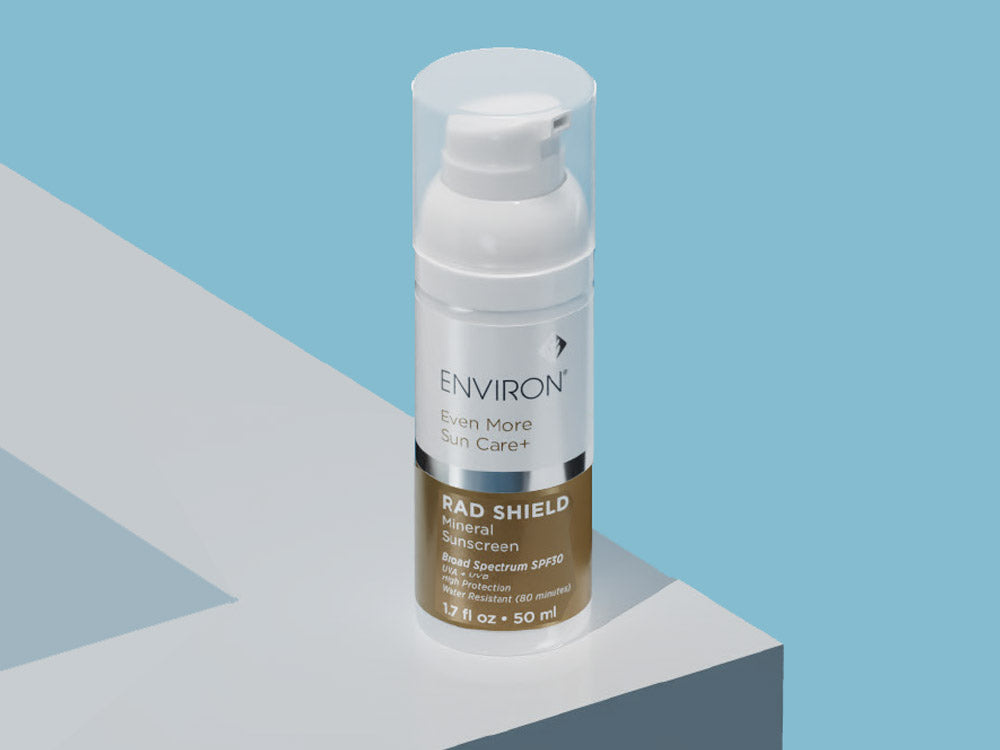The wait is finally over. The newly formulated Environ RAD Shield Mineral Sunscreen SPF 30 is now available in the USA and available to ship starting in early June.
This skincare cult favorite delivers more complete protection against both UV-A and UV-B rays. Environ RAD Shield Mineral Sunscreen SPF30 provides a combination of physical and chemical sunscreens to deliver the most complete broad spectrum protection. This unique formula also supplies and nourishes the skin with essential antioxidants, Vitamin C & E for enhanced protection from harmful environmental influencers.
Environ also recommends for the best skin health and protection to use the new RAD Sunscreen in combination with a daily Vitamin A skincare routine.
Less is more, more often is Environ's philosophy with sun protection. They recommend more frequent use of a lower SPF which means less chemicals. Protection against the sun is always a better skincare plan than damaging the skin and looking for a cure.
What is the difference between UV-A and UV-B rays?
The main difference between UV-A and UV-B rays lies in their wavelength, penetration depth, and biological effects:
Wavelength: UV-A: 320–400 nanometers (longer wavelength) and UV-B: 280–320 nanometers (shorter wavelength)
Penetration: UV-A penetrates deeper into the skin, reaching the dermis. It's responsible for skin aging and wrinkling. UV-B primarily affects the outer skin layers (epidermis). It causes sunburn and can directly damage DNA, contributing to skin cancer.
Proportion in Sunlight: UV-A makes up about 95% of the UV radiation reaching the Earth. UV-B accounts for around 5%, but is more intense and biologically active.
Protection: Sunscreens and sunglasses usually specify whether they offer broad-spectrum protection, which means they block both UV-A and UV-B.

What are some simple tips to protect skin against sun damage?








